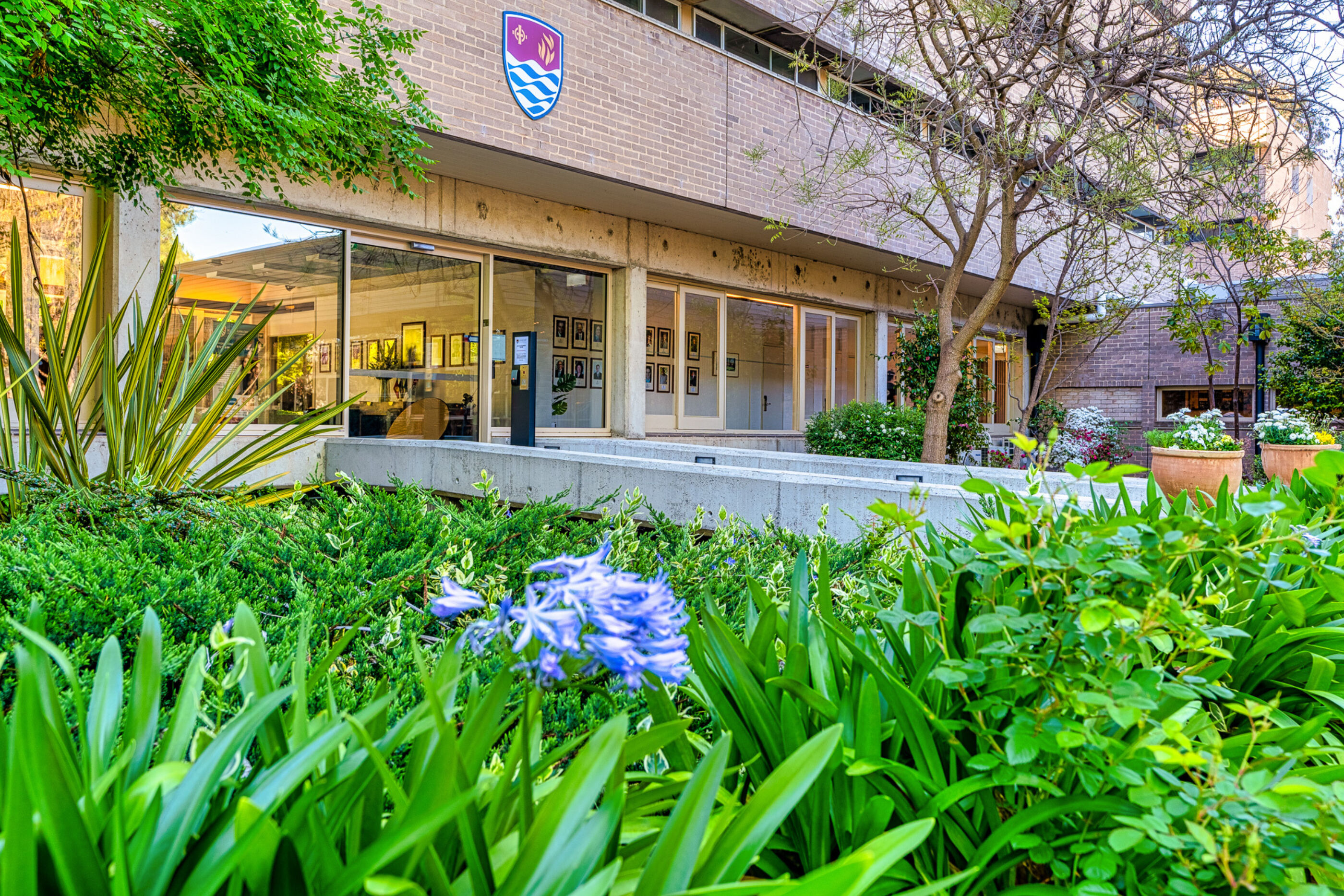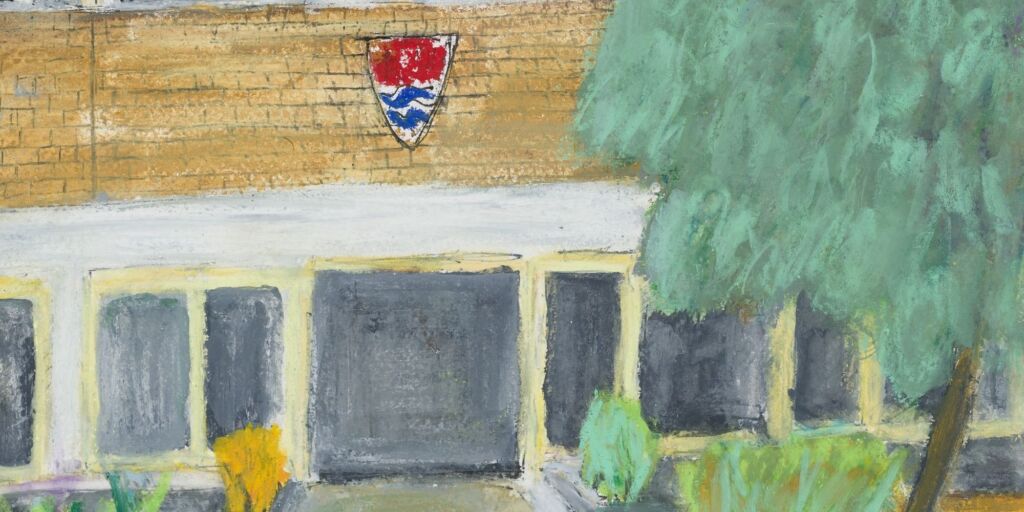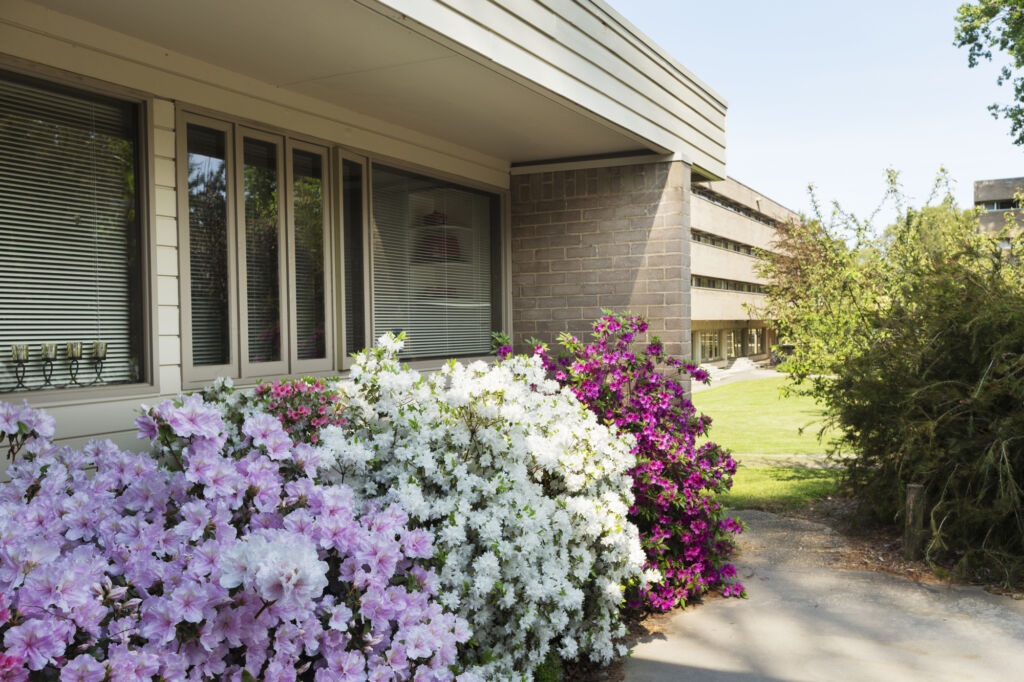Celebrating Prof Graham Farquar AO, FAA, FRS (1971), pioneering biophysicist and recipient of the Burgmann College 2025 Distinguished Alumni Award
Watching his father work as an agricultural extension agent assisting farmers in Tasmania, the seed was planted of what was to become a remarkable career in biophysics for Prof Graham Farquhar AO, FAA, FRS (1971).
‘Because my father and mother both came from the land, it felt useful to society to do something that would help farmers,’ said Prof Farquhar.
After acquiring a biophysics textbook during his travels to the United States, Prof Farquhar's father told young Graham that ‘biophysics is where it’s going to be. It’s the new biochemistry’. Prof Farquhar's father knew renowned Australian ecologist Prof Ralph Slatyer AC (the first Chief Scientist of Australia from 1989–1992), and Prof Slatyer advised that if Graham wished to pursue biophysics, he should study phyisics first. ‘Do physics now’, Prof Slatyer advised. ‘The biology will follow.’
Following this advice, Prof Farquhar studied Physics for two years at Monash University, then in 1968, in his third year of study, he transferred to the Australian National University to study Physics and Applied Mathematics.
In 1970, he was awarded a scholarship to study a BSc with Honours in Biophysics at the University of Queensland, which he completed before coming back to the ANU in 1971 to pursue a PhD in Environmental Biology under Prof Slatyer in ANU’s new Department of Environmental Biology.
The construction of Burgmann College was still underway when Prof Farquhar moved into his room. As Burgmann's Physics Tutor, he occupied a room at a reduced rate in exchange for tutoring Burgmann residents in physics, although he laughs that his physics tutoring sessions had lackluster attendance.
‘People will remember the Tutor’s Rooms. They were larger, supposedly so you could accommodate more people who wanted to do physics at night’, recalled Prof Farquhar, before quipping with a wry smile: ‘It was always empty.’
At Burgmann, Prof Farquhar found a diverse community that gave him a broader opportunity to explore subjects outside of the sciences.
‘My academic life before I came [to Burgmann] was pretty much science—physics, chemistry, biology’, he said. ‘People’s experiences here at Burgmann are probably as diverse as there are numbers of residents, but I was struck by how interesting it was to talk to people in other disciplines, particularly in the humanities. There was a diversity of people, and I liked that.’
For his research, Prof Farquhar returned to his passion for agriculture, and began asking questions with profound implications for farmers and food security: how do plants grow in a country where rainfall is often unpredictable, sometimes too little and sometimes too much?
‘The question I asked was, “If there's a certain amount of water available to a plant, or a leaf, or a crop, how best should the plant arrange its exchange of water for CO₂ to get the most growth for a given amount of water?”
‘No one had ever formalised that as a question before, and it was a productive question.’
Together with two students, Prof Farquhar created a mathematical model of photosynthesis to describe this trade-off between carbon gain and water loss (transpiration). The model calculated how much photosynthesis and transpiration would occur if the stomata (the tiny pores on a leaf’s surface) were slightly more open or closed.
'The equations are fairly simple, as far as mathematics are concerned, but it’s more the concept. At that time, mathematics wasn't respected much in plant physiology. But I noticed that the equations we were using could also be applied to examining the isotopic composition of leaves’, he said.
‘It was a fairly simple way to give a representation of, “What is efficiency? How much carbon do you gain for a given water loss?”’
Their research was groundbreaking, because earlier methods of measuring the same data required enormous amounts of fieldwork and gear. With Prof Farquhar’s approach, a scientist could take a single leaf from the field, dry it, and measure the leaf's ratio of C¹³ to C¹² in a mass spectrometer, and quickly gain insights into how the plant was balancing water use and growth. These discoveries later opened the way for plant breeders to develop crop varieties that use water more efficiently; a huge boon to farmers in a changing climate.
His research also transformed climate science. With the amount of carbon dioxide (CO₂) rising in the atmosphere, Prof Farquhar asked what happens to plant growth and water use when CO₂ levels increase? The biochemical model of C₃ photosynthesis he developed with Susanne von Caemmerer and Joseph Berry in 1980 is now embedded in global climate models and widely used by the Intergovernmental Panel on Climate Change (IPCC) to help predict how ecosystems will respond to a changing climate.
For his groundbreaking discoveries, Prof Farquhar has been awarded multiple exemplary awards and distinctions. In 2007, he shared the Nobel Prize with other members of the United Nations IPCC, then in 2014 he was co-awarded a Rank Prize with CSIRO Fellow Dr Richard Richards for developing a new wheat variety that offers higher yields with less water.
In 2015, he was awarded the Prime Minister’s Prize for Science, then in 2017 he was awarded the Nobel-equivalent Kyoto Prize for Basic Sciences (the first Australian to win a Kyoto Prize), and then named the 2018 Senior Australian of the Year.
In addition, he has been elected into the Australian Academy of Science, the Royal Society of London, and the United States’ National Academy of Sciences, among many other prestigious fellowships, distinctions, and honorifics.
‘Despite having more than my fair share of awards, [the Burgmann College Distinguished Alumni Award] does mean a lot to me. The awards I've had in general have been scientific awards. What's lovely about this [award] is that it's a memory of a time when I was interested in things other than physics and biology.
‘I'm grateful to a place where there's integration of not only coursework they’re doing on campus, but integration of people with different ideas, testing out these ideas, and preparing for what comes after leaving Burgmann.’
For current students, Prof Farquhar offered this advice: ‘Work on something that you really enjoy—something that you love. If you love what you're doing, you can put up with pretty much anything else.’


